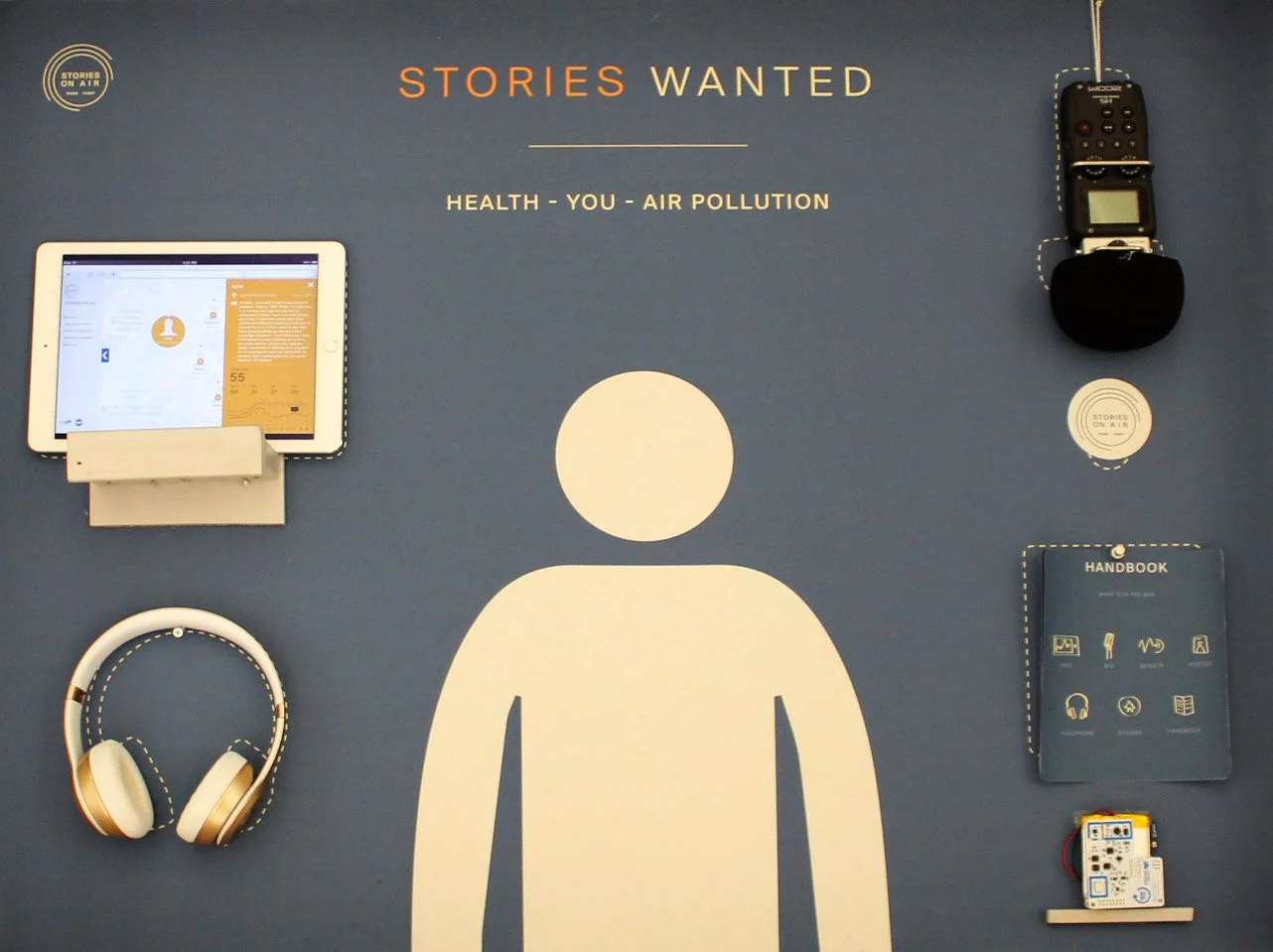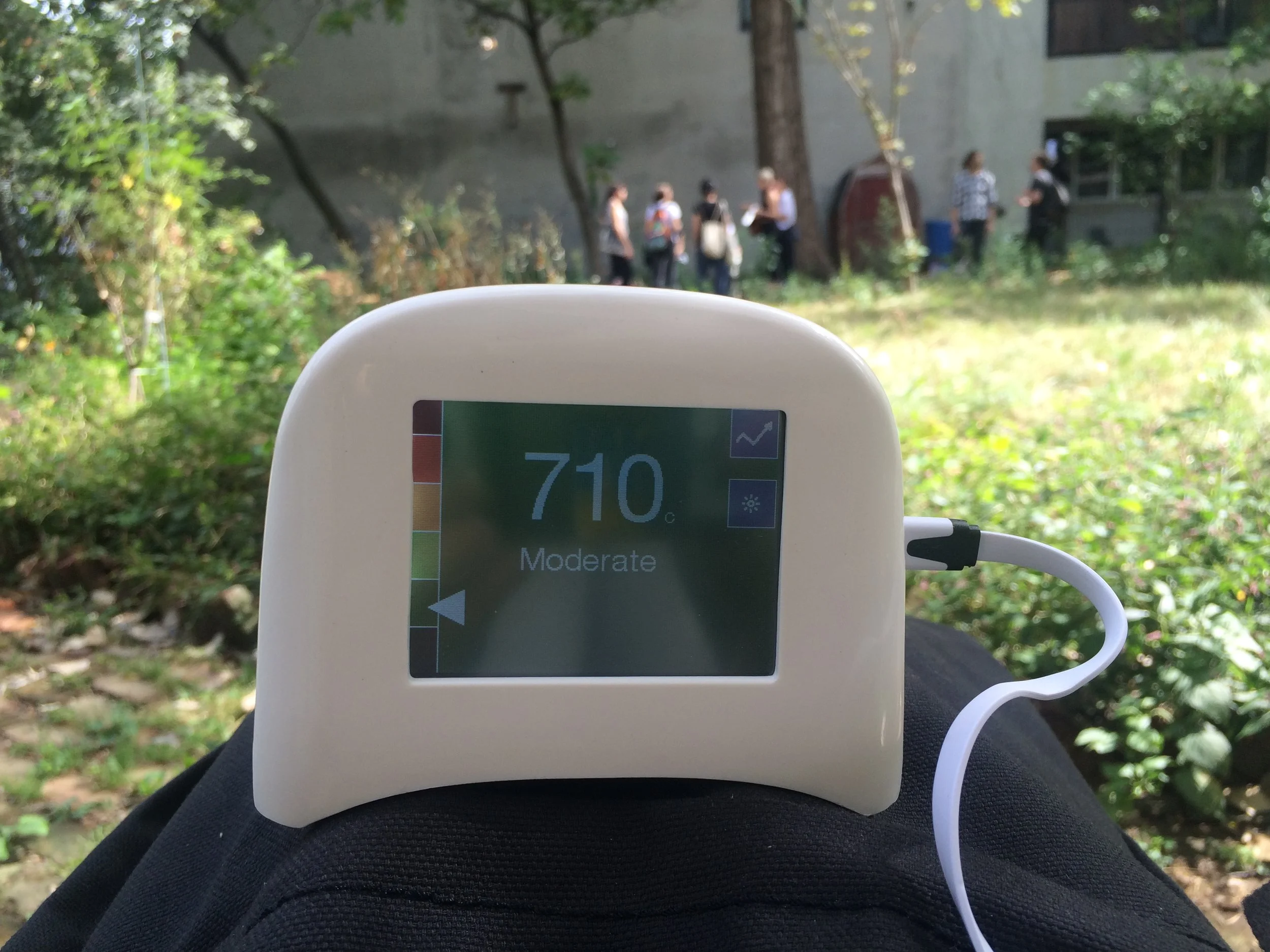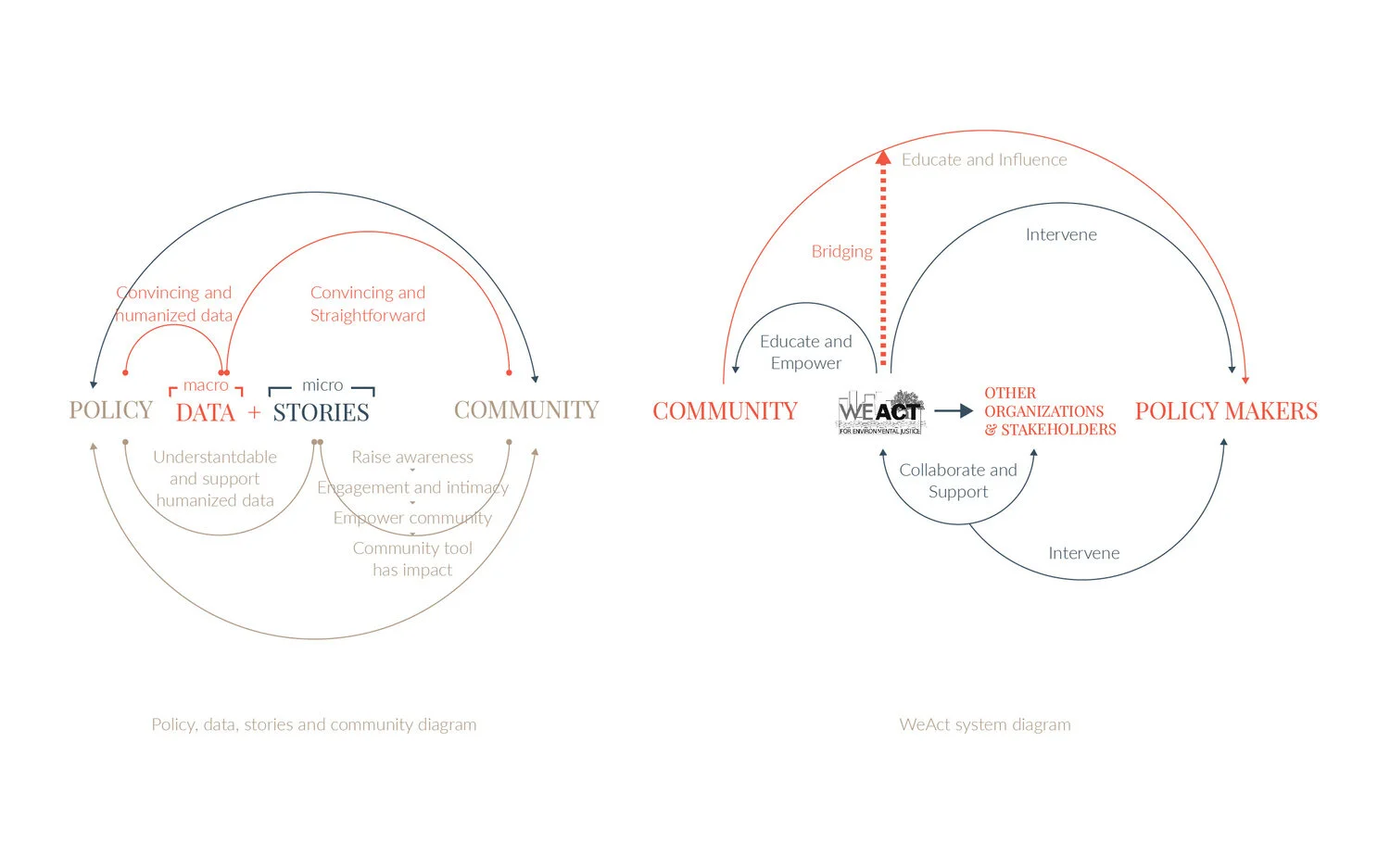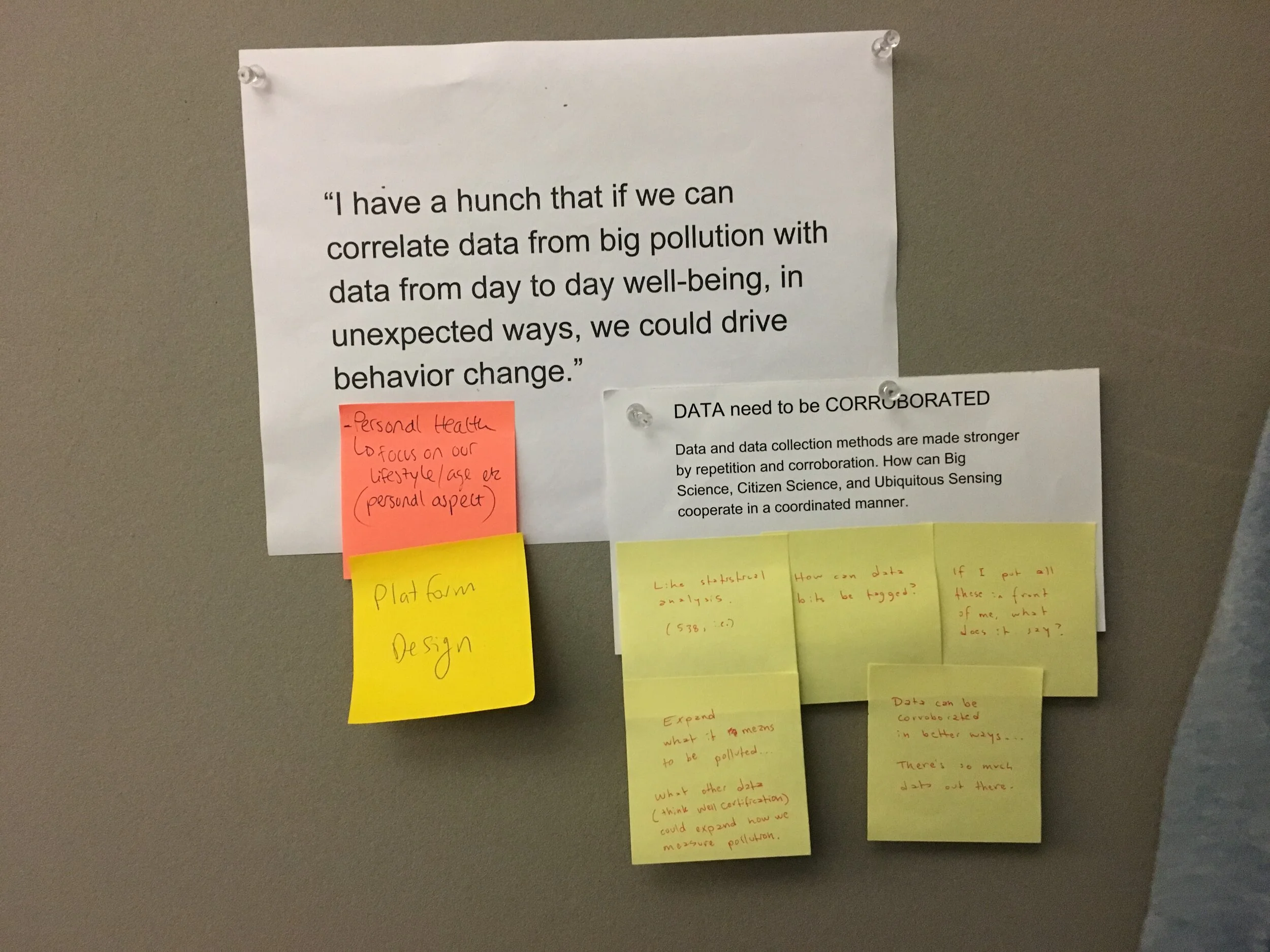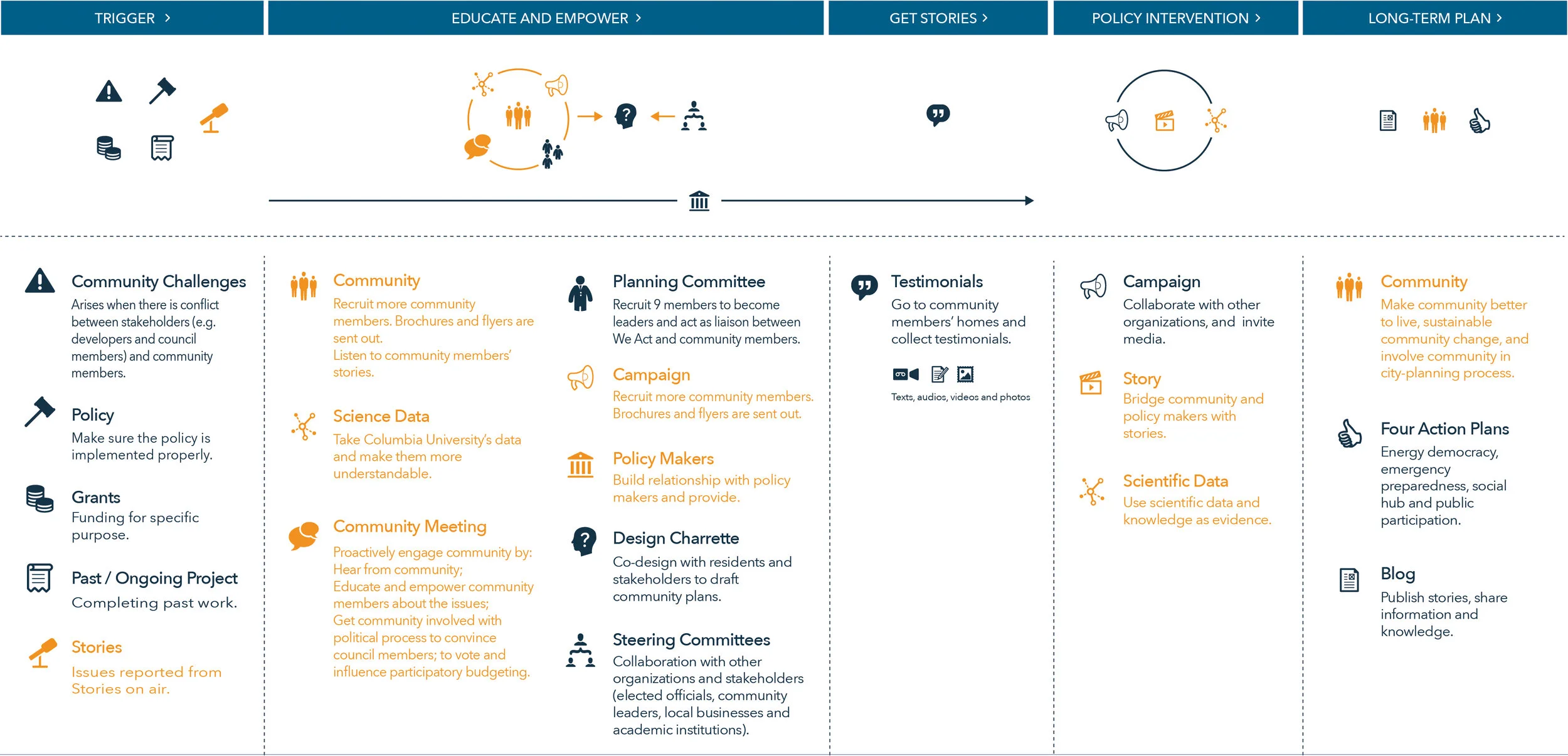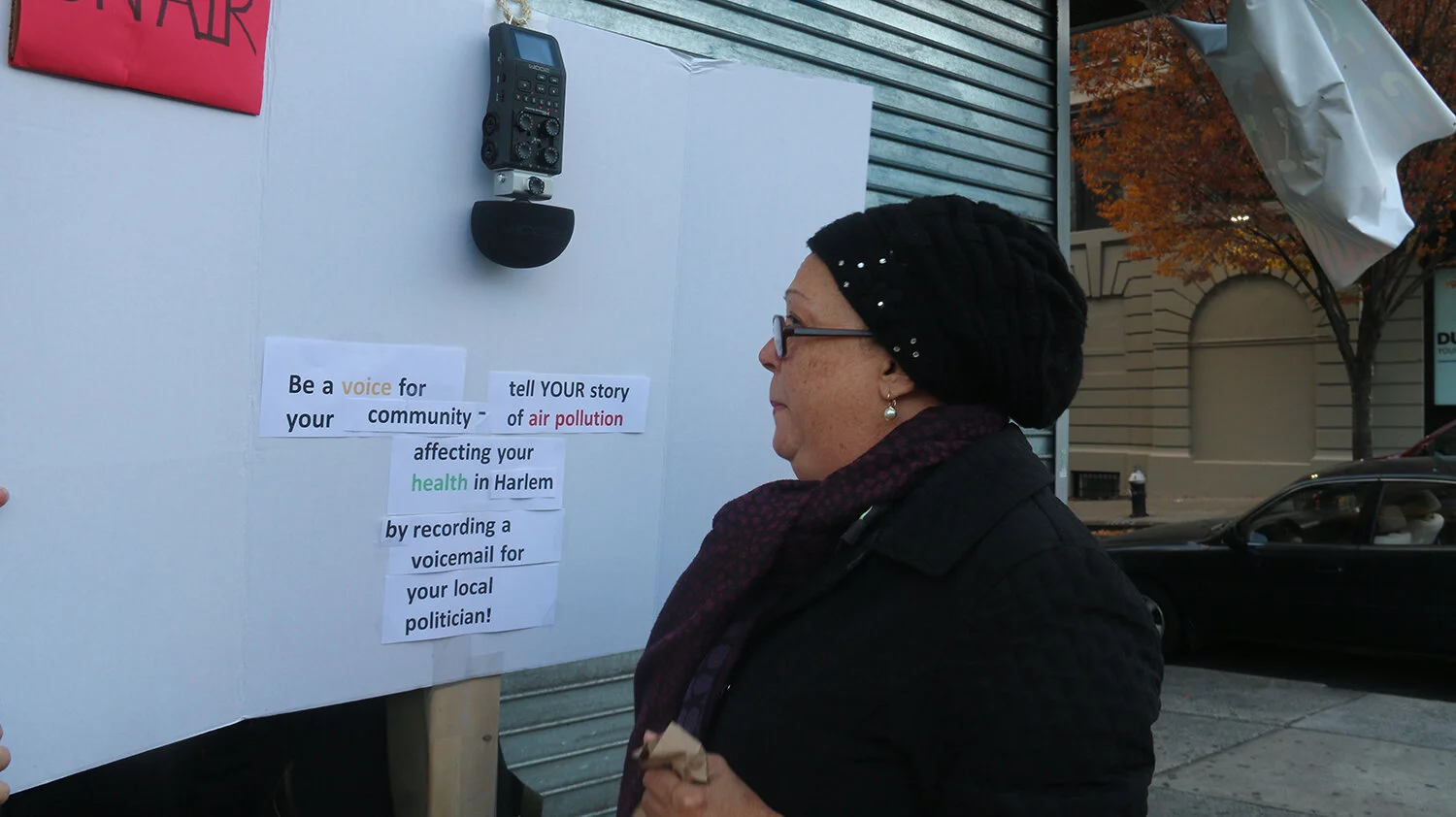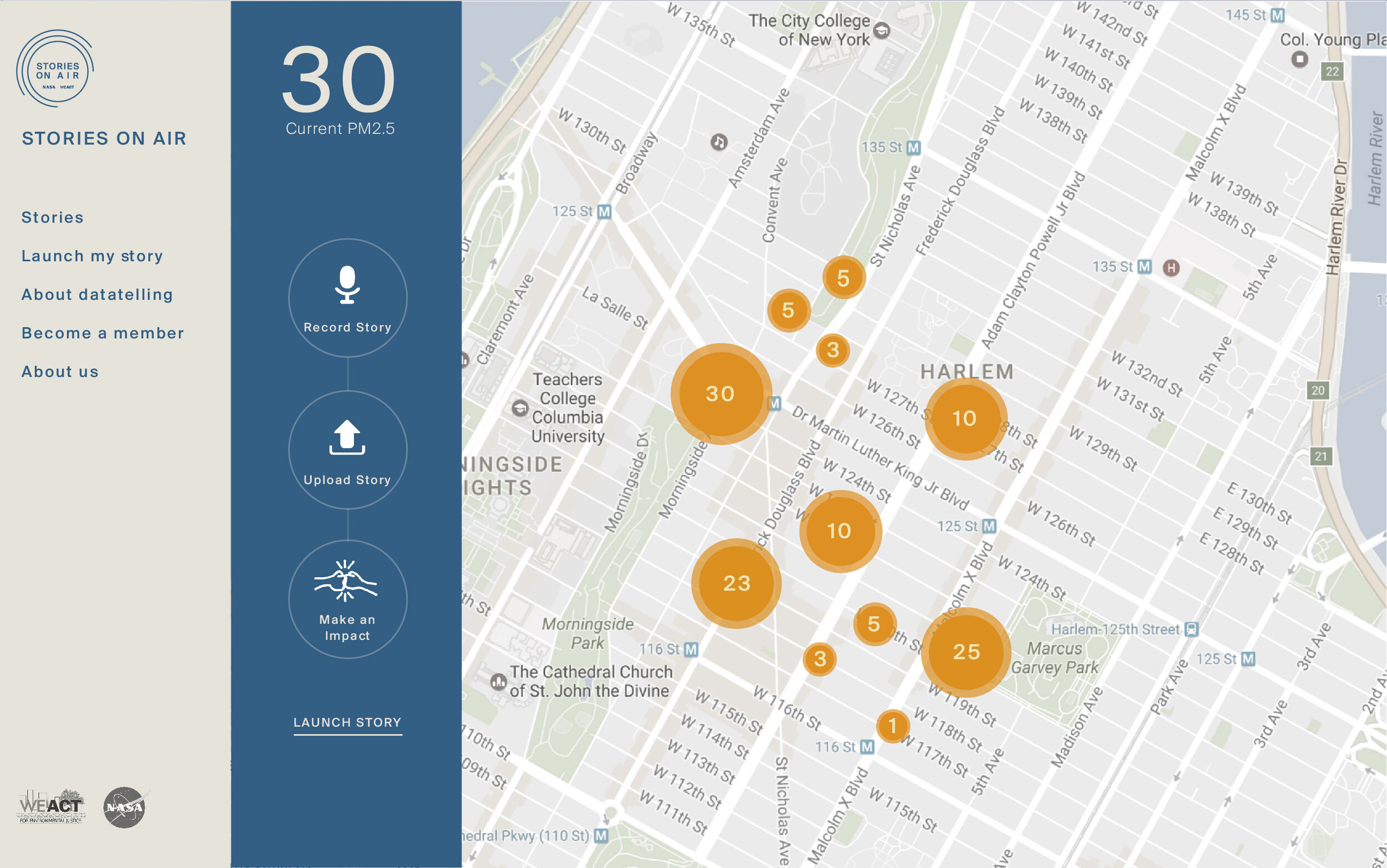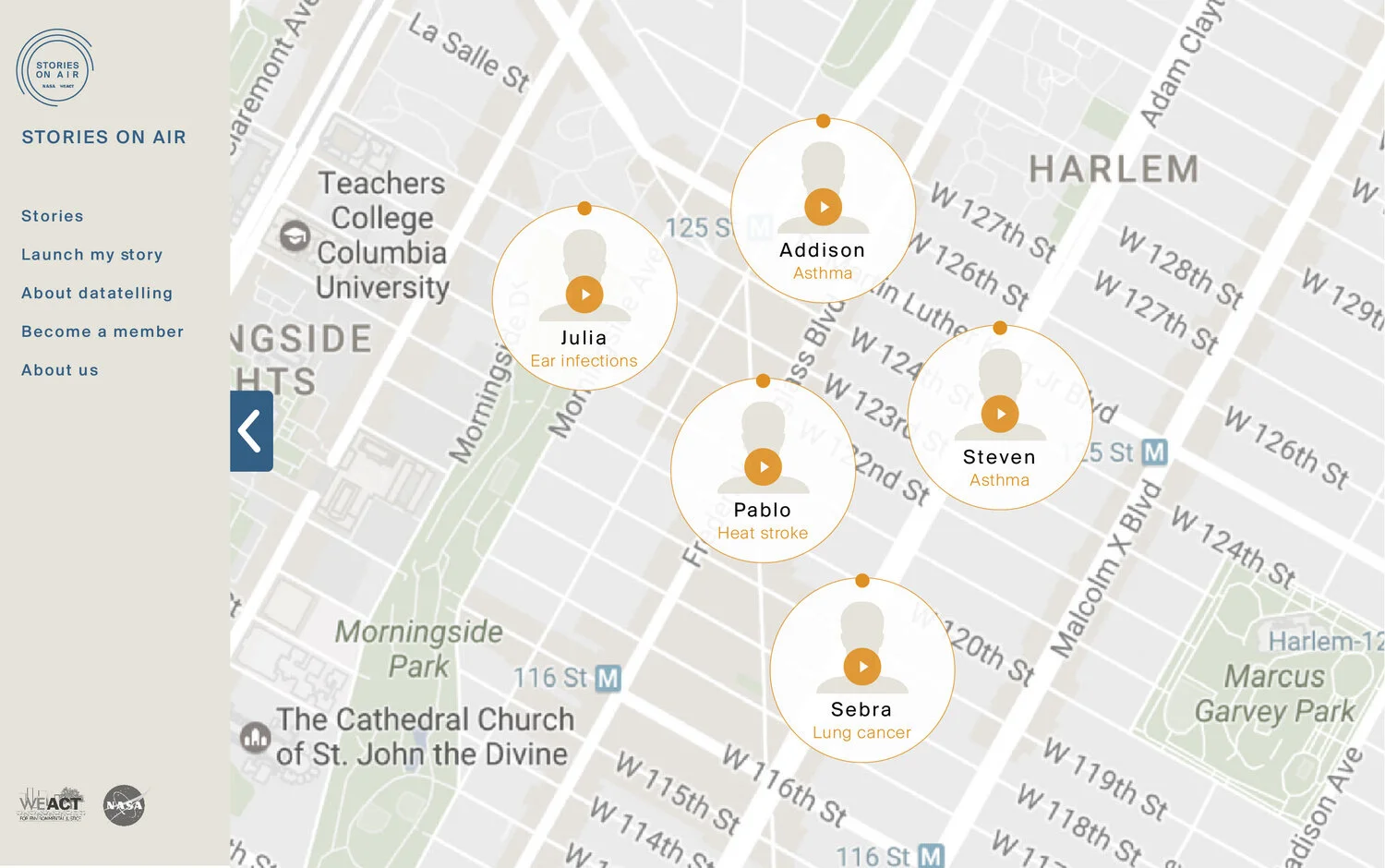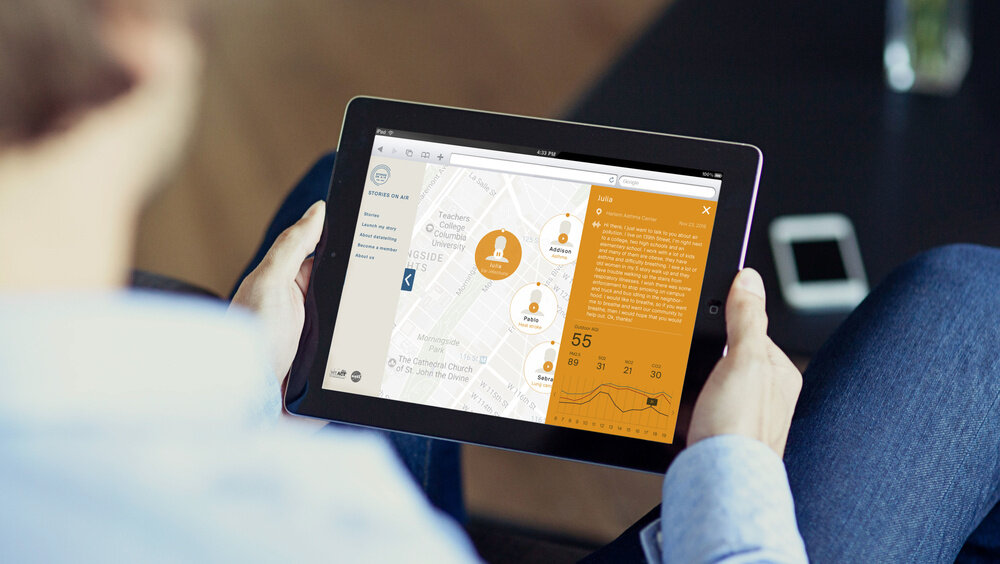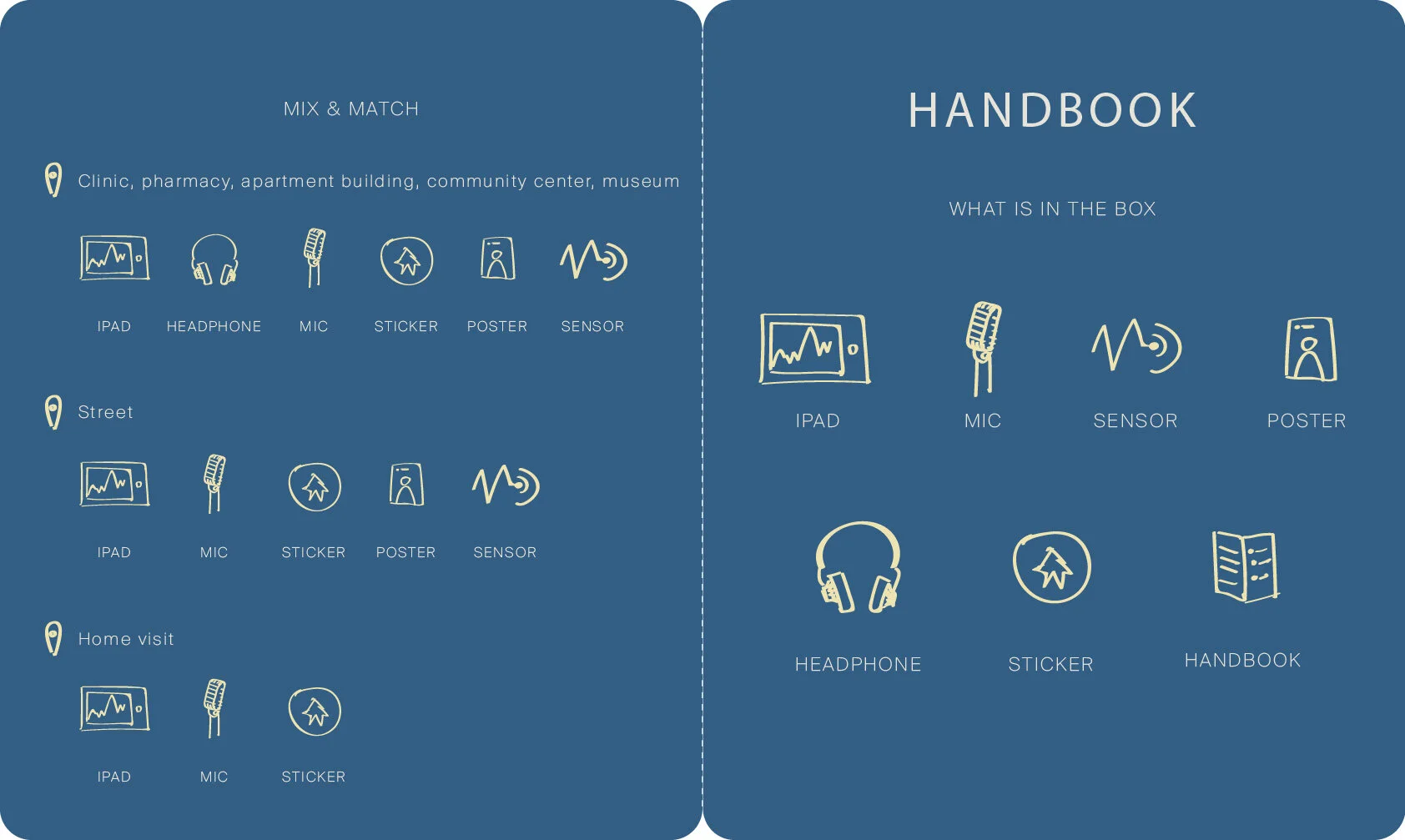Stories On Air
Climate change, storytelling
Stakeholders: WE ACT, NASA.
My role as a service designer on the team involved field research, stakeholders interviews, system mapping, user journey, prototyping, prototype testing, website design, storyboard, and video narrative
Creative tools: Premiere, Adobe Illustrator, and Adobe Photoshop
2016
“Stories on Air” is an adaptable and portable story collecting toolkit, accompanied by an online platform, using this mutual symbiotic relationship to link NASA’s air pollution data to Harlem’s community members’ stories on air pollution. It expands upon and reinforces story collection methods for community-based organizations to support sustainable change by empowering more citizens to use their voices to make a difference in the political process.
“Stories on Air” is a studio project at the Transdisciplinary Design program. It is one of the five winners of the Reimagining NYC Competition.
About
Design process & activities
Empathize
Field Research, system mapping
Define
Hunch and design brief
“I have hunch” exercise helps shape the design brief:
Create
Journey mapping, concept
We mapped out the current policy intervention journey at WE ACT (in blue), and the new intervention opportunities (in orange) that can facilitate positive changes in the policymaking process.
“Governance is about shifting power, there is a human behind every power.”
- Louis D. Bailey, WE ACT Manager of Membership and Organizing
How do we measure and evaluate the impacts air pollution has on a community to make policy changes?
New technology from NASA’s satellite TEMPO allows us to record unprecedented scientific data and capture the exact number of air pollutants in communities and how these change throughout the day.
We recognize the tendency of using big data to establish validity when wanting to make an impact. In practice, the validity of science is questioned and data can feel removed from our daily experiences.
Community-based organizations, such as WE ACT, touch on the human element in the political process: they collect community members’ stories around issues where they want to make an impact and drive policy change.
We believe in linking communities’ stories and data to build empathy and make data feel more “human”, to ultimately, have an impact on policymakers. We also believe visualizing data can elicit these stories.
Prototype & test
Rapid prototype, street prototype testing, story collecting
Quick prototype testing on the streets:
Design iteration
Prototype iterations
A portable toolkit that WE ACT members can easily set up at different locations in the community to collect stories. The more accurate local community’s climate data are gathered by the sensors and presented on the tablet
On a website (as the content hub), community members are more aware of the impacts of local air quality by listening to the stories collected from the toolkit and are able to upload their own stories.
A handbook gives organization staff the guidance of different ways to use the toolkit that can fit into their own scenarios.
A user video raises community members’ awareness of the local air quality.
Team member: Lauren Atkins, Noa Bartfeld, me
Advisors: Lara Penin and David Young
M.F.A. Transdisciplinary Design studio project at Parsons
